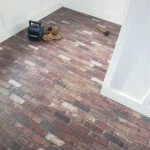Replacing hardwood floors can be a daunting task, but it doesn’t have to be. With the right tools, knowledge, and preparation, you can make the process of replacing hardwood floors a breeze. In this article, we will provide you with a step-by-step guide to replacing hardwood floors.
Step 1: Measure Your Room
The first step to replacing your hardwood floor is to measure your room. Measuring your room will help you determine how much hardwood flooring you need to purchase. You will also need to measure the width and length of each wall in your room, as well as the distance between each wall. This will help you determine the size of the boards you will need for your floor.
Step 2: Choose Your Flooring
Once you have measured your room, it is time to choose your flooring. There are a variety of hardwood flooring options available to choose from. Depending on the look you are going for and your budget, you can choose from solid hardwood floors, engineered hardwood floors, or laminate floors. Make sure to research each type of flooring before making a decision.
Step 3: Prepare the Subfloor
Once you have chosen your flooring, it is time to prepare the subfloor. The subfloor should be level, dry, and free of debris. Use a level to check the subfloor for any dips or bumps. If you find any, use a self-leveling compound to fill in the gaps. Make sure to also sweep and vacuum the subfloor to remove any debris.
Step 4: Install the Underlayment
Before you can begin installing the hardwood floor, you will need to install an underlayment. This will help to protect the floor from moisture and provide insulation. Most underlayments come in rolls and are easy to install. Make sure to read the instructions carefully and follow them precisely.
Step 5: Install the Flooring
Once the underlayment is installed, you can begin installing the hardwood flooring. Start by laying out the boards in the room. Make sure to leave a small gap between each board to allow for expansion. Once the boards are laid out, use a nailer or staple gun to attach them to the subfloor. Make sure to follow the manufacturer’s instructions for the best results.
Step 6: Finishing Touches
Once the hardwood flooring is installed, it is time to add the finishing touches. This can include adding baseboards or trim to cover the gaps between the floor and the wall. You may also want to add a sealant to the floor to protect it from water damage. Finally, you can add a rug or furniture to complete the look of your new hardwood floor.














Related Posts









